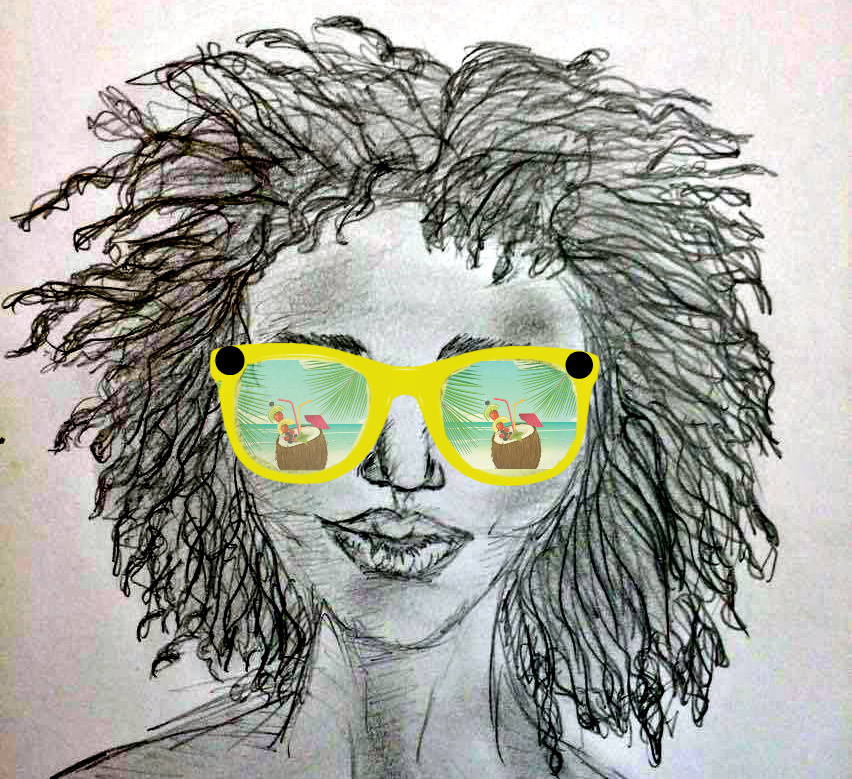Snap to it
When Snapchat first arrived on the social media scene, it was hard to see its purpose beyond sending nudes. The app started as a project created by a group of Stanford students. On Snapchat, the user snaps a picture and sends it to a friend who can view the picture for up to ten seconds before it disappears—of course, someone can always take a screenshot. Now worth over $3 billion USD, Snapchat has added a host of other features, like chat, geotags, and filters that make for a spontaneous and fun social media platform. It’s no surprise that Snapchat’s latest invention, Spectacles, further integrates social media with real life in a positive way.
The concept of Spectacles is simple: They are a pair of sunglasses with a video camera embedded in the frame. They allow the user to take videos from their perspective, which can then be uploaded to the app via Bluetooth or Wi-fi. Once uploaded, the videos go to the ‘Memories’ section of the app, meaning they are saved and users can choose to send it to friends. Spectacles sell for $130, whereas other wearable tech are significantly pricier: Go-Pros are in the $200 to $400 range and the Google Glass, an Android device resembling a pair of eyeglasses, which went for $1,500 USD. Snapchat also announced that they are changing their name to Snap Inc., suggesting that Spectacles are just the first innovation of many. The home page of their website describes Snap Inc. as a camera company. Snap Inc. could veer further into the wearable tech industry by focusing on creating more cameras and camera accessories that are equally affordable and easy to use.
The comparison to Google Glass—which stopped selling to the public last year—has already been made; however, Spectacles are much closer to a Go-Pro. Google Glass allowed users to access all of their phone’s features, including internet, apps, and camera, on a glass screen right in-front of their eyes. They were meant to be worn all the time. Google Glass distracted and alienated people from the world around them, whereas Spectacles allow one to capture videos without the distraction of pulling out one’s phone.
The video announcement of Spectacles features a group using the device to capture footage while skateboarding. The handsfree video camera is a great way to capture video in situations where pulling out a phone could be dangerous—biking or skateboarding. Yet, the low profile of the glasses allows Spectacles to be used while casually walking around.
The major objection to Spectacles is the issue of personal privacy. With Spectacles, people can discreetly take pictures of anyone anywhere. Yet, taking pictures of strangers has been easy for years. Spectacles will do little, if anything, to escalate this problem. Think of all the people in photos, videos, and memes that have gone viral. How many of those people were aware they were being photographed? The issue of privacy and social media is far more complex than a pair of sunglasses.
For a company that has managed to bring out the best in social media and communication, Spectacles are a step in the right direction. Sometimes it’s just nice not to stare at a screen.
—Anna St. Clair
Contributor
Snap back to reality
Unsatisfied with its status as a ‘messaging app,’ Snapchat is venturing into the world of wearable tech. ‘Spectacles’ are sunglasses with an integrated video camera allowing users to transfer their memories onto the app via Bluetooth or Wi-Fi. Snapchat, in changing its name to Snap Inc., is trying to broaden their brand; one that has been working just fine already. With over 100 million daily users and approximately 8,796 photos shared every second, it’s easy to see where Snapchat gets the confidence to expand. Transitioning from software to hardware, however, is a high-risk move—one that Snapchat hasn’t proved that it’s ready for.
The idea behind sunglasses that film your vision is an exciting premise. With the steady advancements of technology in our society, something as futuristic as a wearable social media device seems only appropriate. What Snapchat doesn’t want its users to remember is that a very similar product was released only a few years ago. Compare the Snap Spectacles to the lack of success of Google Glass. Released in 2012, many people raised their concerns over Google Glass; public places, such as movie theatres and bars, went as far as banning the product due to privacy issues. In fact, Google Glass had significantly more powerful filming capabilities and built-in Wi-Fi when initially released; however, it was still unable to maintain market share. By Jan. 2015, Google officially announced that they would be taking Google Glass off the market in a humble retreat, and the product is now little more than a memory.
The other issue concerning Spectacles is their very limiting style. While sunglasses seem ideal for the function of inconspicuous filming during the daytime, it limits the events a user can wear them to without looking ridiculous. Not to suggest that Google Glass was any more stylish, but at least the clear glass was less of an eyesore.
Much of the concern for Spectacles comes from the fear of unknowingly being filmed. Today the ethics of recording unaware people is a grey area. While it is legal to film someone in a public space, the idea of someone’s sunglasses recording video would make anyone uncomfortable. This isn’t the first time Snap Inc. has found itself questioned for privacy. Recent complaints arose when the company released their new privacy policy stating they have the right to reproduce users’ snaps. With the expansion to include Spectacles, Snap Inc. opens itself up to potential legal implications.
At $130 dollars USD, the sunglasses are being marketed as affordable and accessible. When considering alternatives such as the Go-Pro, which does cost about $300 but films for over two hours and gives you a very high quality image, spending $130 on Spectacles appears fiscally irresponsible. Additionally, it’s inconvenient that Spectacles can only transfer the footage to the app when connected to Wi-Fi or Bluetooth. Ultimately, Snap Inc. Spectacles would be a misguided venture and an exhaustion of the company’s resources. Snapchat should focus on what it knows in order to remain one of the number one social media apps.
—Morgan Davis
Staff Writer









